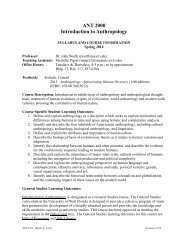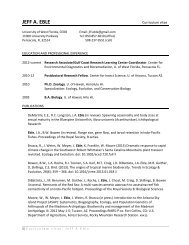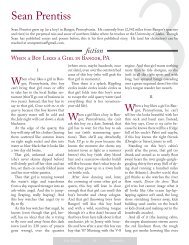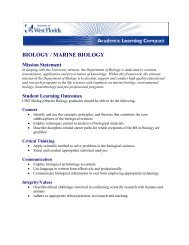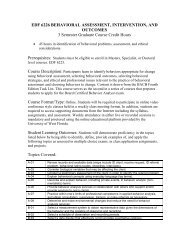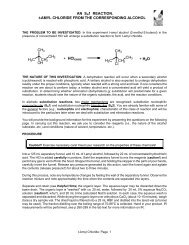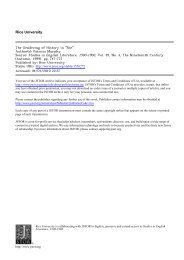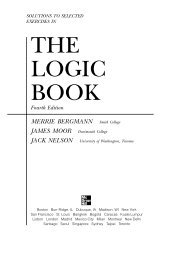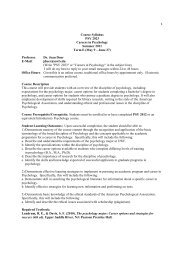1 Experiment #2: Telescopes And Microscopes Purpose: To ...
1 Experiment #2: Telescopes And Microscopes Purpose: To ...
1 Experiment #2: Telescopes And Microscopes Purpose: To ...
Create successful ePaper yourself
Turn your PDF publications into a flip-book with our unique Google optimized e-Paper software.
But from the similar triangles in this figure, we see that<br />
hi =<br />
ho i i<br />
so that <br />
o f ho f .<br />
The angular magnification is defined as the increase in angular size,<br />
m n<br />
=<br />
f .<br />
Since a realistic lower limit on the focal length is a few centimeters in order to avoid getting<br />
aberrations, simple magnifiers typically have magnifications no greater than 10.<br />
The simple telescopes and microscope which you will build here are basically two-lens<br />
optical systems, in which a converging lens (the objective) is used to form a real image of the<br />
object, whether it be a tiny bug or a distant planet. A second lens called the eyepiece, which can<br />
be either converging or diverging, is then used to examine the image formed by the objective.<br />
In an astronomical (or Newtonian) telescope, the objective (“obj”) forms a real inverted<br />
image I of a distant object O (such that o ) in its focal plane, as shown in Fig. 4 below. The<br />
angular size of the image formed by the objective is given by<br />
obj hi fobj where hi is the height of the image and fobj is the focal length of the objective. This is also the<br />
angular size of the distant object, as we see in the following diagram.<br />
h o<br />
large distant<br />
object<br />
obj<br />
h i'<br />
inverted virtual<br />
distant image<br />
objective<br />
obj<br />
Fig. 4. Astronomical Telescope<br />
The image I of the objective is the real object O' of height h o' = h i for the eyepiece, which is used<br />
as a simple magnifier. The eyepiece then produces (as in Fig. 3) a virtual image I' which is<br />
magnified in size to h i' but remains inverted. The angular size of the image seen through the<br />
eyepiece (“eye”) is seen from Fig. 4 to be<br />
eye h i<br />
f eye<br />
where f eye is the focal length of the eyepiece. The image I formed by the objective is very near the<br />
focal point of the eyepiece, so that the distance L between the two lenses is approximately equal<br />
to the sum of their focal lengths, L = f obj + f eye. The total angular magnification of the telescope is<br />
M eye<br />
obj<br />
5<br />
f obj<br />
= f obj<br />
f eye<br />
f eye<br />
eye<br />
h i = h o'<br />
eye<br />
eyepiece<br />
eye



